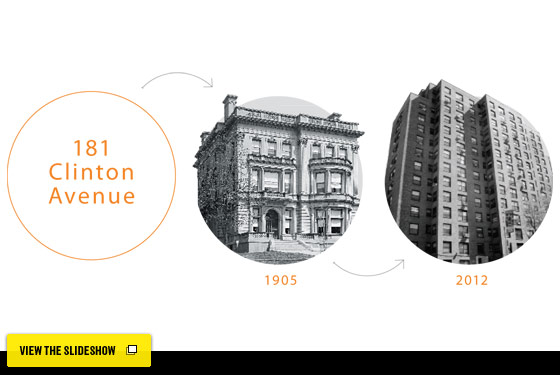
Photographs: From left, Museum of the City of New York, Wurts Bros. Collection; Katie Weinholt/New York Magazine
Long before $12 cocktails at Putnam’s and half-a-million-dollar two-bedrooms, Clinton Hill was home to oil magnates like Edward T. Bedford and Charles Pratt, the founder of the Pratt Institute, who, not unlike today’s residents, turned his cronies onto the delights of living in Brooklyn. But for a short stint in the forties, anonymous building complexes, like the one that currently stands on Clinton Avenue between Myrtle and Willoughby Avenues, began sprouting up to house Navy personnel returning home from the war. Some of the neighborhood’s grandest mansions came down, like Bedford’s manse, which stood on that same stretch of Clinton Avenue. According to a 1905 article in Brooklyn Life magazine, Bedford’s palazzo was “a massive structure of Indiana limestone in Italian Renaissance style, worked out in pure Greek detail.” It also extended a block east to Waverly Avenue to accommodate a backyard stable, housing Bedford’s prized stallions.

The Italian salon featured woodwork in white and gold and walls hung with woven pink brocade. The gold furniture was covered with Aubusson tapestry, and the tiger-skin rug was made to order in India. Photo: Museum of the City of New York, Wurts Bros. Collection

The library opened off from the salon and also served as the music room. The bookcases were finished in leaded art glass. The wall hangings were steel-blue plush. The woodwork and the piano were made from Circassian walnut, with touches of silver. Photo:Museum of the City of New York, Wurts Bros. Collection

Edward T. Bedford’s backyard stable, home to his prizewinning horses. Photo: Brooklyn Public Library ” Brooklyn Collection
